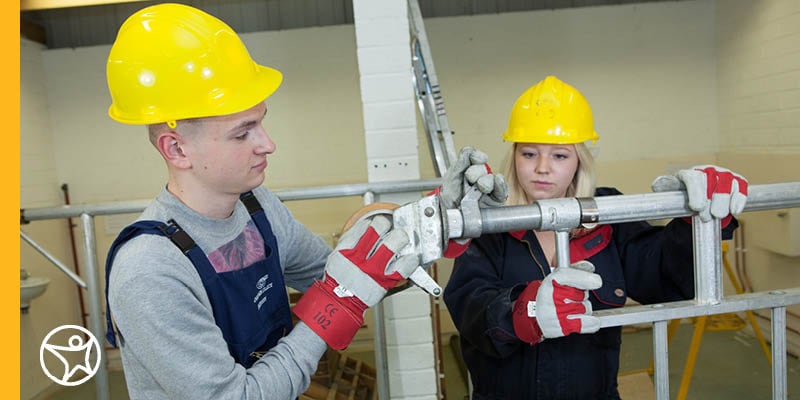Why Do Some Kids Hate School and What to Do About It?
by Phoebe Brown
by Valerie Kirk
5 min to readConstruction careers are among those with the highest demand. According to the U.S. Bureau of Labor Statistics, jobs in construction are expected to grow faster than the average in the next 10 years for all other occupations.
Thanks to this high demand, high school students can find many construction career opportunities that will allow them to make an impact right out of high school.
Careers in construction cover a wide range of jobs, many of which work with cutting-edge technology to build the infrastructure that keeps America moving. Construction careers include:
Carpenter
Civil engineer
Concrete finisher
Craft laborer
Drywall installer
Framer
Heavy equipment operator
Pipefitter
Millwright
Roofer
And more!
Pay varies across the different types of construction careers. Construction professionals can be paid hourly or can be salaried depending on the position.
Construction careers that require specialized training can earn lucrative base salaries. For example, an elevator installer and repairer can start their career earning $70,000. Drywall finishers, tile setters, and roofers earn on average $50,000-$60,000 a year, and higher end trade work like Aerospace Operations can earn $78,000.
Students pursuing construction career opportunities can generally start when they are still in high school, giving them a pathway to an exciting and lucrative career where they can make a difference right after graduation.
There are four key pathways for construction careers:
Because of the increased demand for skilled trade workers, high schools are increasing their efforts to offer career and technical education (CTE) classes. These classes teach students hands-on technical skills for different types of construction and other skilled trade careers and gives them the opportunity to explore construction careers while they are still in high school. Many CTE classes also prepare students to take required certification exams, making their resumes more appealing to future employers.
Students in CTE classes can also get internships in their chosen construction career, helping them network and learn from seasoned professionals.
Because careers in construction require specialized skills, many construction companies provide on-the-job training. These are often called apprenticeships. Apprenticeships can take several years, depending on the field. Apprentices are paid as they gain their skills, with salaries typically increasing as they achieve different milestones. Apprenticeships often end after passing certification or licensing exams. Upon successful completion, apprentices become journeymen — the next step in their construction career.
Community colleges are another great way to explore construction careers, especially if a student’s high school doesn’t offer CTE courses. Students who choose this path can explore different construction careers while earning their two-year associate’s degree. This can help them decide if a construction career is right for them.
Construction companies and local contractors often partner with community colleges to create a funnel of skilled talent. Apprentices may also be required to take courses as part of their construction career pathway.
While most construction careers don’t require a bachelor’s degree, there are some that do, including architects and civil engineers. Students that want the full college experience but also want to work in the lucrative construction industry can choose this pathway.
Connections Academy is passionate about helping students feel confident and prepared for their future and offers unique college and career readiness opportunities designed to give students the knowledge, skills, and connections they need to succeed after graduation.
To support students interested in careers in the skilled trades, including construction careers, Connections Academy has even partnered with The Home Depot’s Path to Pro program. The program is designed to build the next generation of trade professionals to fill the widening talent gap.
The program introduces students to careers in the skilled trades, offers training opportunities while they are still in high school, and connects them to trade professionals who want to hire and train talent who are just starting their careers.
The Pathway to Pro program and other career readiness opportunities offered by Connections Academy gives eligible students a head start on rewarding and in-demand careers.
With online school’s flexible scheduling, students can take advantage of training and internship opportunities in construction and other careers, fitting their studies in at a time that is convenient for them. They also have the flexibility to take CTE classes at a vocational school or take classes at their local community college through the dual enrollment program.
With the growing shortage in skilled construction professionals, the National Center for Construction Education and Research (NCCER) launched Build Your Future, an organization dedicated to educating students about careers in construction. As part of their outreach efforts, they launched Careers in Construction Month, which takes place in October. The goal is to inspire the next generation of construction craft professionals.
Learn more about Connections Academy’s College and Career Readiness program opportunities, including how we support a career pathway to construction, by joining a virtual information session.
